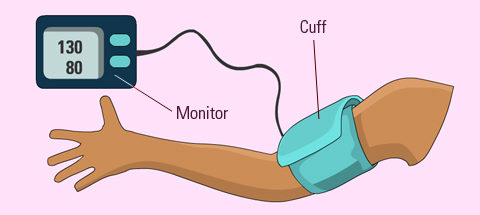 |
How is High Hypertension diagnosed?
Taking your blood pressure test is nothing scary. It’s always better to go to the hospital to have it checked for you, or learn to do it the right way, if you intend to do it yourself at home.

First, you will be asked to relax, sit comfortable on a chair, or lie on an examination bed and breathe normally. An inflatable blood pressure cuff will be tied round your arm. This will be inflated and deflated. The nurse will show you the readings when the cuff is completely deflated.
You shall find two figures on in the readings, usually written as follows:

What does the figures mean?
Blood pressure is measured in millimetres of mercury (mmHg). A blood pressure reading below 130/80mmHg is considered to be normal and it means you have a systolic pressure of 130mmHg and a diastolic pressure of 80mmHg. If consistently over a period of time, your readings are above 140/90mmHg, the doctor will confirm that you have a HBP and will advice on what to do next.
The first number represent the Systolic pressure and the second number represent the Diastolic pressure
 Systolic pressure: the pressure of the blood when your heart beats to pump blood out Systolic pressure: the pressure of the blood when your heart beats to pump blood out
 Diastolic pressure: the pressure of the blood when your heart rests in between beats Diastolic pressure: the pressure of the blood when your heart rests in between beats
Changes in blood pressure readings:
Blood pressure readings are not always the same. They can change depending on the following:
 Time of day: Readings are lower during sleeping hours (night) and higher during daytime. Time of day: Readings are lower during sleeping hours (night) and higher during daytime.
 Activity: Reading are higher when exercising or active, and lower when the body is at rest. Activity: Reading are higher when exercising or active, and lower when the body is at rest.
 Moods: Readings are higher when a person is happier, excited, afraid or upset. Moods: Readings are higher when a person is happier, excited, afraid or upset.
 Stress or pressure: Readings are higher when a person is stressed or under some kind of pressure Stress or pressure: Readings are higher when a person is stressed or under some kind of pressure
 Illness: Readings may be higher when we are ill or have a disease or infection. Illness: Readings may be higher when we are ill or have a disease or infection.
 |
 |
